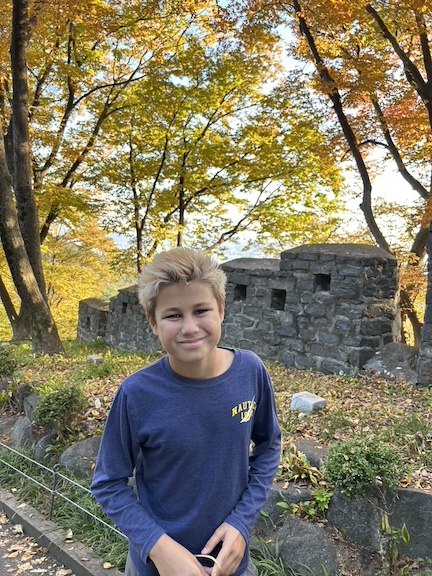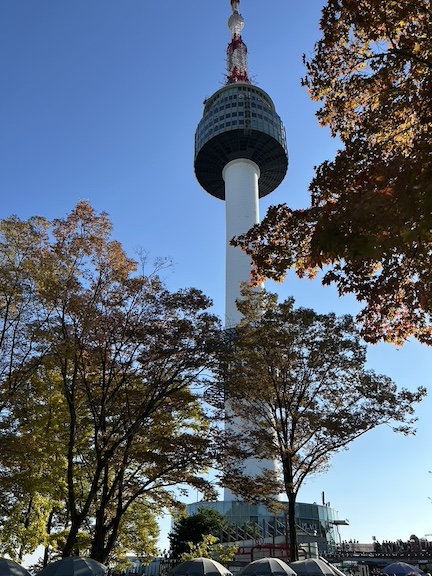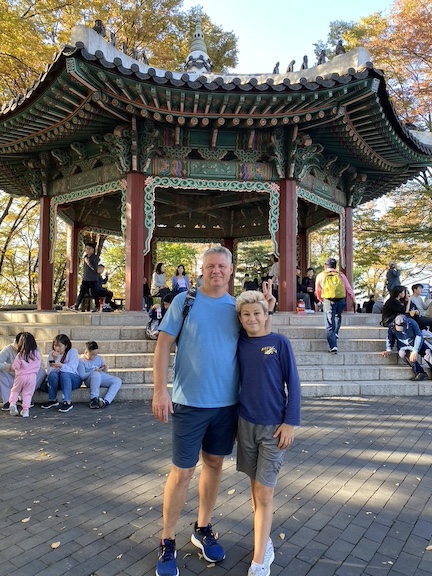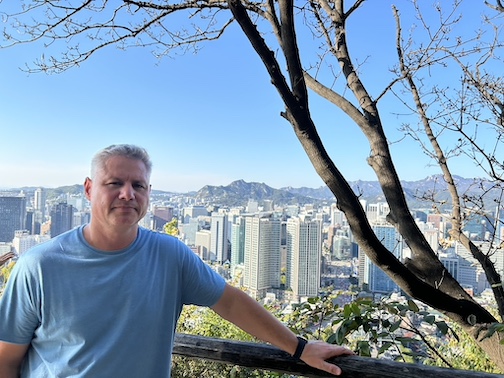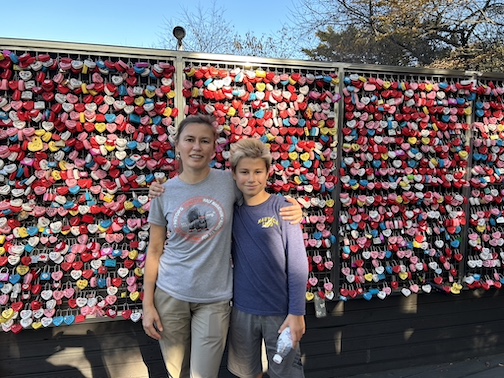Special shout out to Celine who’s been instrumental in helping us plan our adventure in Seoul! ❤️ We literally checked off (almost) every box of her recommendation list. ✔️
Started our day with the Seoul Guided Walking Tour of Unhyeongung Palace and Bukchon Hanok village. The tour was free organized by the Seoul for Tourists using local volunteers. Then walked to the Namdaemun market. And from there hiked all the way to the top of the N Seoul Tower, which featured amazing views of Seoul, tons of love locks and enjoyable park. Got home super tired.
- WoD: Hanok means traditional Korean house.
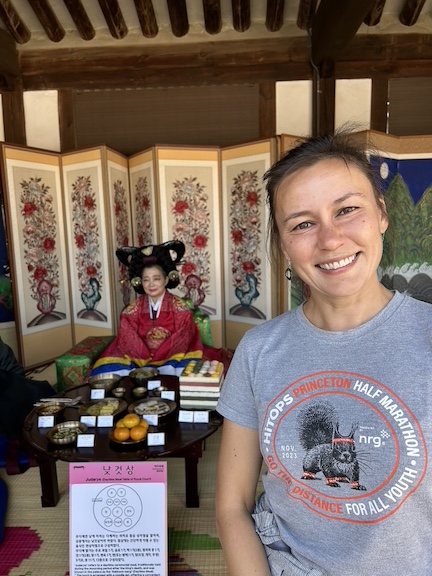
We first met our guide at the Unhyeongung Palace, which was Regent Heungseon’s house, where King Gojong (1852-1919) lived for 10 years since his coronation at 11 yo, after which he moved to the royal palace, Gyeongbokgung palace. We learned about characteristics of a traditional Korean house (higher foundation = higher status, rounded beams = higher status, square beams = lower status, contrary to Japanese or Chinese houses, Korean ones had a foundation. The big stone container for water was meant to repel fire-devil. Fire was one of the most disastrous cases of wood building causalities).
- Interesting fact, when a wife were to be chosen for a king, there was a period of time (1-2 months) when young women (12-19-ish yo) could noto marry to technically ensure the king had the widest possible choice. In practice, it seemed that this decision was highly guided by the parents of the king.
- The palace access was free and inside the main courtyard, there were exhibitions of different food types that novelty, including the king and the queen, were eating. The women and men were wearing habits and it was very colorful, authentic and fun to observe. I wish we stayed there for some hands on activities for kids. May be we will try tomorrow. There were a lot of school tours, kids, etc.
- I was surprised how simple, if not stoic, the palace and its insides looked like. Very minimalists. Especially if you compare that to a Sultan’s man’s quarter (saranchae) or European monarchs’ quarters. Day and night. Might this be different in the Gyeongbokgung palace?
We went to the Bukchon Hanok Village next and explored it, trying some fermented drinks there – wow, strong strange tastes! The village was crazily crowded with tourists. There were paid people in the middle of the streets with “Please keep quiet” signs to attempt to minimize the noise for the current dwellers. Not sure how helpful it was…
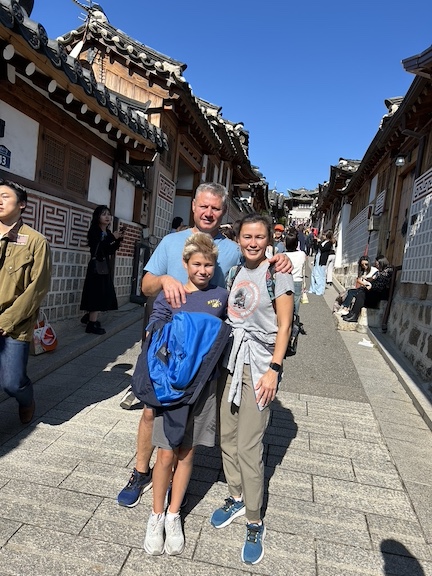
- The village served as a living place for a lot of government officials in between two palaces: Gyeongbokgung (the main one palace used by the Joseon Dynasty 1392-1910) and the second one Changdeokgung Palace used as a back up in case the official royal palace cannot be used due to wars or disasters like fire. Unfortunately, the Bukchon Hanok village was re-done during the Japanese invasion (1910-1945). It was disastrous for its inhabitants, most of whom left the place. While there was some authenticity to the buildings, a lot of them lost its original design and its inhabitants became more ordinary people. That said, part of that place is now occupied by foreign officials (they call it the “foreigners village”).
